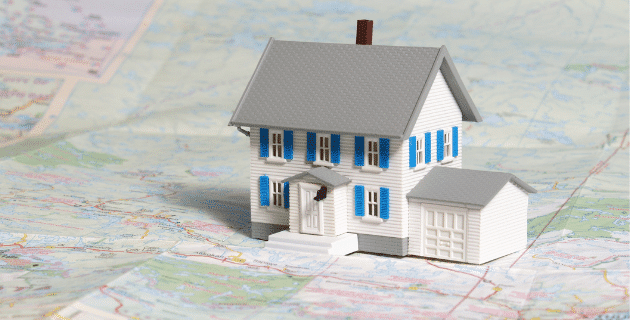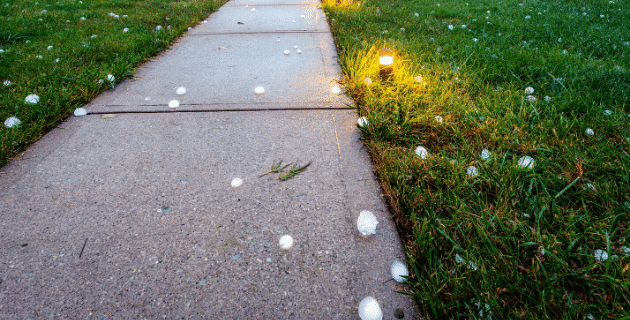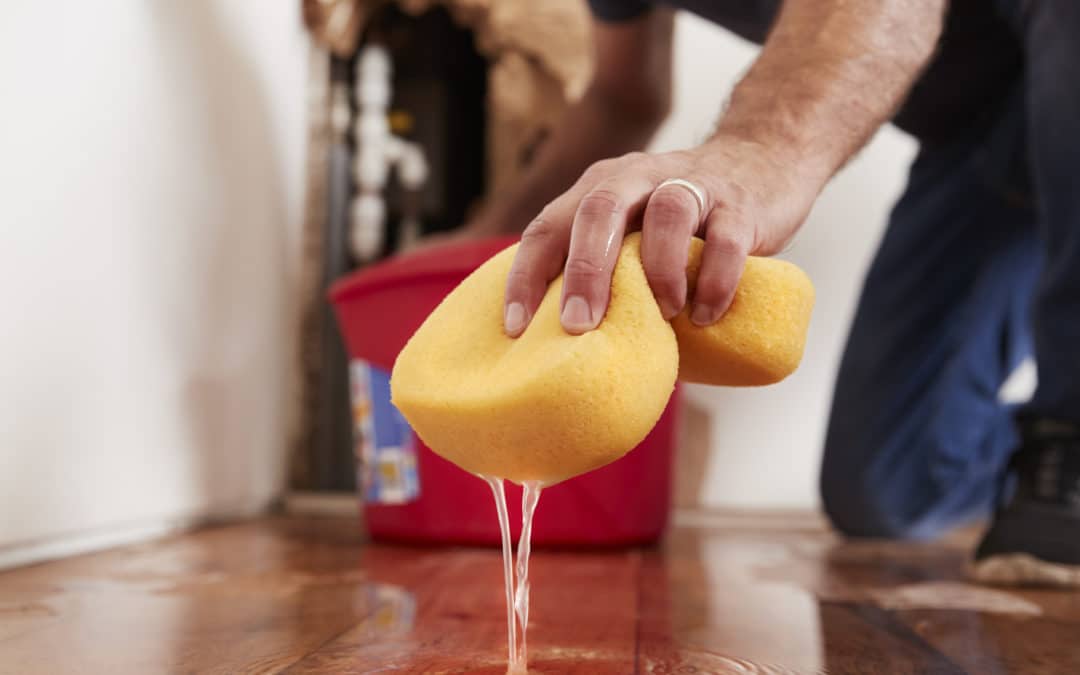
by California Casualty | Homeowners Insurance Info |
Is there anything better than knowing your vacation is near? You’ve taken off work and you’re busy planning and packing. But while you’re focused on your destination, don’t forget that you’ll also be leaving your home unattended.
Whether you’re heading out of town for two days or two weeks, take the time to prepare your house and property so there will be no unfortunate surprises (or visitors) while you’re away.
Make your home looks lived-in.
Savvy thieves look for signs that you are away, such as an overgrown lawn, a pile-up of mail or packages, or an empty driveway. A well-maintained home and property reinforce the fact that people are living here, and most likely at home.
-
- Mow and edge your lawn before you leave. Trim your bushes, especially around windows and close to your house.
- Pick up any debris and any personal items in your front or backyard.
- Stop your mail and newspapers, and arrange for a neighbor to pick up any packages.
- Leave a car parked in your driveway or ask a neighbor to park in front of your house.
- Invest in an inexpensive light timer to turn the lights on and off while you’re away.
Secure your home and property.
There’s a lot more than simply locking the doors that goes into securing your home and property. You want to make it unlikely that a thief would target your home, and also protect its contents should a neighborhood fire or disaster occur.
-
- A security system can help protect your property and also reduce the cost of your home insurance policy.
- Consider a motion-sensor floodlight, which can help to deter trespassers.
- Make sure your important papers are in a fireproof container or safe.
- Leave an emergency contact number and a spare key with a trusted neighbor. (Don’t hide your key in a rock. That’s the first place a thief will look.)
- Don’t advertise that you are going away on social media. Wait until you return home to post photos.
Clean thoroughly.
Coming home to a dirty house is no fun. Neither is being greeted by week-old smells of stinky garbage. Take the time to clean up before you leave so everything is fresh and ready for your return.
-
- Give your house an overall cleaning.
- Empty the refrigerator of perishable items.
- Empty all of the trashcans, especially the kitchen trash, right before you leave. Ask your neighbor to put out your trash cans on the next trash day.
- Run your garbage disposal with half a cup of vinegar and some water.
- Do the laundry and change the sheets.
Make plans for your pets and your plants.
It goes without saying that you won’t leave your pets or plants unattended if you’re going to be away.
-
- Depending on the type of pet, you may need a pet sitter or boarding facility. Make those plans well in advance of your trip.
- If you’re leaving pets at home, make arrangements for someone to check on them. You will provide them with food and water of course. But even low-maintenance animals can get accidentally trapped in spaces or encounter other mischief.
- Ask a neighbor to water your plants at your home or theirs. If you dole out your plants to multiple neighbors, make a list of plants and locations so you know who has what.
Put your systems in vacation mode.
If no one will be living in your house, why pay for gas, electric or water? It’s a good time to save energy by shutting down the home systems that you don’t need, taking into account if there are any pets or plants that will need them.
-
- Put your water heater in vacation mode. It’s a setting that allows your water heater to run your boiler at a lower temperature than normal.
- Turn off the water valves to the dishwasher, washing machine and all sinks, if no one is going to be using them (such as a neighbor watering plants).
- Set your thermostat to a temperature closer to the outside temperature. Just remember to adjust it for pets and plants as needed.
- Change the batteries in your smoke detectors if you have not recently done so.
Do a final check the day you leave.
There’s a lot to think about as you’re leaving for vacation, and likely your mind is more focused on the trip ahead than what’s happening at home. This is where a final “to do” list and check-in helps. Plan to do these things on the day you leave.
-
- Unplug and shut off appliances not in use. Not only does this save on your electric bills, it protects items from power surges.
- Close all doors and windows. Close the curtains and blinds.
- Leave on a light or two on or set a lamp timer.
- Set the thermostat appropriately.
- Check the washer. The last thing you want is old (and smelly) wet laundry to greet you when you return.
- Make sure your oven is off. Make sure your iron is off.
- Pro tip: Take pictures of items you’re worried about, such as oven knobs to show they’re off. That way, you can check back if you’re concerned about them.
Check-in while you’re away.
You may be out of town, but you’ve got great ways to check in to see what’s happening in the neighborhood.
-
- Subscribe to a local app such as NextDoor.
- Look at online footage from your home’s security camera.
- Text or call a neighbor to check in.
You also may consider hiring a house sitter so that you don’t have to worry about what’s happening at home. If you do choose that route, make sure that the person is a reputable one. Establish a set of rules, so it is clear what your house sitter can and cannot do (for example: can watch Netflix; can’t have parties).
Don’t forget to thank the neighbors who helped you. Bring them a souvenir or small gift from your vacation or get them a gift card for a dinner out.
Finally, know that your home and property are protected by homeowner’s insurance. Should anything happen while you’re gone, your policy helps provide that peace of mind.
Have a great trip.
This article is furnished by California Casualty, providing auto and home insurance to educators, law enforcement officers, firefighters, and nurses. Get a quote at 1.866.704.8614 or www.calcas.com.

by California Casualty | Homeowners Insurance Info, Pets, Safety |
It’s a well-known fact that plants produce oxygen. But did you know that some plants also “clean” the air that we breathe? It’s true. These plants can remove harmful chemicals, from paint fumes to furniture polish. This can help reduce respiratory problems, allergy symptoms, and headaches. But it’s important to note, that not all plants do this. And some that do are not safe for pets and young children, because they are considered toxic if consumed.
If you’re thinking about adding some house plants that promote indoor air quality, and are also good for pets and your youngsters, here are some great options to add some safe greenery to your space.
Why are chemicals in my air, anyway?
You don’t have to live in a chemical plant to be exposed to VOCs, volatile organic compounds. VOCs are emitted as gases from certain things that are common in our homes. Cleaning products, paints, cosmetics, printer ink, and even building materials can create these pollutants.
The NASA Clean Air Study and other studies looked at different plants’ effects on reducing VOCs. We culled the list to include those plants that were safe for pets, too.
8 Safe Indoor Plants
1. Spider Plant (scientific name: Chlorophytum comosum)

Named for the long leaves that resemble a spider’s legs, these plants remove formaldehyde, xylene, and toluene from the air. These chemicals are found in household products such as glue, paint, lacquer, nail polish, and stain removers. Formaldehyde also is in some cosmetics, dishwashing liquids, building materials, and insulation.
Spider plants are great plants for beginning gardeners. They are easy to grow; you can even start them from cuttings. They just need water and bright indirect light.
Pro tip: A spider plant’s dangling leaves may attract curious kittens. Make sure your plant is in a safe place where your cat cannot knock it over.
2. Money Plant (scientific name: Epipremnum aureum)

This plant is named for its round, flat leaves that, with a little imagination, resemble coins. According to tradition, these plants are supposed to bring luck. Money plants are lucky in other ways; they soak up toxins in the air like formaldehyde.
This plant likes bright indirect light. It’s also a great plant for beginners. You can grow it in water or soil.
3. Areca Palm (scientific name: Chrysalidocarpus lutescens)

This is a big, bold plant that commands attention with its feathery, arching fronds. It naturally purifies the air by absorbing formaldehyde, xylene, and toluene, pollutants found in many common household products.
Make sure you have enough space if you’re growing it indoors. It can grow as tall as six or seven feet. An Areca Palm needs indirect sunlight and enough water to keep it moist. Because it grows big, your Areca Palm will need repotting every couple of years.
4. Boston Fern/Sword Fern (scientific name: Nephrolepis exaltata)

Fondly known as a living humidifier, the Boston Fern loves humidity. It will naturally put moisture back into the air and is great for sinuses and allergies. It also is an air-purifying superstar. It absorbs formaldehyde, xylene, and toluene, pollutants found in many household products.
Boston Ferns do need indirect sunlight in a spot that isn’t too warm, and regular watering to keep the soil damp. Since they love humidity, Boston Ferns do well in bathrooms and kitchens.
5. Wax Plant (scientific name: Hoya Carnosa)

This low-maintenance plant is named for its green waxy leaves, and it produces clusters of tiny starry flowers. The Wax Plant is great for anyone frequently exposed to chemicals found in paint, gasoline, or smog. It absorbs VOCs like benzene.
It’s a tropical plant that thrives in bright indirect light and high humidity. It’s easy to grow a Wax Plant from cuttings. Place them in a water jug for 2-3 months until the roots are well developed, before planting.
6. Moth Orchids (scientific name: Phalaenopsis)

These colorful, long-lasting flowers look exotic but actually are very hardy. Their flowers resemble moths in flight, which was the inspiration for their name. These beautiful plants are great at absorbing paint fumes.
Interestingly, Moth Orchids get their nutrients from the air. You may see them grow roots above the soil. Don’t cut them off as the plant needs them to thrive. Moth Orchids need indirect sunlight and prefer higher temperatures and humidity.
7. Barberton Daisy (scientific name: Gerbera jamesonii)

While the Barberton Daisy comes in traditional white, it also blooms in yellow, orange, red, and pink. Its bright colors make it a favorite house plant. The fact that it also filters out benzene, formaldehyde, and trichloroethylene is a bonus! These chemicals are found in adhesives, cleaning fluids for rugs, paint removers, spot removers, and typewriter correction fluids.
Indoors, they can flower any time of the year. They love direct sunlight and moist soil. They usually last for a single growing season but your Barberton Daisy can last for two to three years with good care.
8. Purple Waffle Plant (scientific name: Hemigraphis alternata)

Also called Red Ivy, the Purple Waffle Plant has beautiful gray-green leaves with purple undersides. Its coloring makes it a popular plant for homes and offices. An added bonus is that Purple Waffle Plants are very good at removing VOCs such as benzene, toluene, and octane. These are common pollutants found in paint, cleaners, hair spray, and more.
This plant likes medium to bright light indoors. It thrives in moist soil. Purple Waffle Plants will produce white flowers in the summertime.
What to Do If Your Fur Baby Eats a Toxic Plant
While the plants on this list are safe for pets, not all plants are. If your fur baby ingests any part of a toxic plant, call your veterinarian immediately. You may be asked to bring your pet in for treatment. For emergencies like this, pet insurance can help. Find out more about what pet insurance can cover by talking with a California Casualty customer service representative.
This article is furnished by California Casualty, providing auto and home insurance to educators, law enforcement officers, firefighters, and nurses. Get a quote at 1.866.704.8614 or www.calcas.com.

by California Casualty | Homeowners Insurance Info |
Droughts, fires, floods, and storms – natural disasters can wreak havoc on your home and your property. Yet, many of us live in regions that are prone to them. If you live in such a place – or if you’re considering moving into one – how do you protect your investment?
Two ways: 1. Know your risks. 2. Have the right protection.
Know Your Risks: Is your region prone to a natural disaster?
A natural disaster can happen anywhere at any time. Weather patterns in a region are a good predictor of whether your area will likely be at-risk now and in the future.
The average weather pattern in a place over several decades is called a climate. An area’s climate affects the weather and the type of natural disaster(s) they are prone to. For example, we know the West has a very dry climate that causes frequent wildfires; the Northwest is known for its wet weather, which could lead to severe flooding. The Midwest is associated with brutally cold winters which can lead to devastating winter storms. And the warm coastal climate of the South East is the prime environment for hurricanes.
If you want to know the most common weather risks to your home or in your area, you can do a free climate risk assessment on ClimateCheck.
Know Your Risks: 6 Common Disaster Risks
Disasters come in many forms, from tornadoes and hurricanes to floods and droughts. Following are six types of disaster risks that may affect your home or property.
1. Heat Risk
Extreme heat occurs when there is high heat and humidity, and temperatures exceed 90 degrees for a period of days. In terms of disasters, extreme heat can sometimes lead to fires. (See the Fire Risk section for more detail.) U.S. counties with the greatest risk for heat include 37 counties in the south with a third of them located in Florida.
2. Drought Risk
Droughts occur when there is not sufficient precipitation. Not only does this put a stress on the water supply, but it can also have a severe impact on your landscaping. Soil dryness can also lead to settling issues with your home’s foundation. Unfortunately, for most homeowner policies, settling or shrinking is not a covered loss. U.S. counties with the greatest risk for drought include 34 counties in the west, with 21 in Colorado.
3. Fire Risk
When drought occurs and heat becomes extreme, the conditions are right for a fire to start. Wildfires can destroy your home or community. Wildfires account for about $16.5 billion in damages annually in the U.S. In the event of a fire caused by a natural disaster, your home’s dwelling coverage will pay to repair or rebuild your home up to your policy limit. U.S. counties with the greatest risk of fire are located in the West.
4. Flood Risk
This includes coastal flooding as well as flooding from surface water or nearby lakes and streams. Rising sea levels and extreme weather have contributed to flooding, which cost as much as $20 billion annually in the U.S. A traditional homeowner’s policy does not cover flooding. For your home to be covered you will need to purchase a separate flood policy. U.S. counties with the greatest risk of flooding are mostly located in the south, including Florida, Louisiana, and North Carolina.
5. Severe Storm Risk
Storms include high wind, wet or snowy weather events. These could be hail storms, hurricanes, tornadoes, or other types of destructive weather. Storm damage in the U.S. averages about $17 billion annually. Your homeowner’s policy may cover some aspects of storm damage, including hail, wind or lightning. If you are unsure, check with your insurance’s Service Department to see what is covered under your policy. U.S. counties with the highest risk of storms are located in the Northeast or Southeast.
6. Earthquake Risk
Earthquakes typically occur along fault lines and can cost millions in damages. In the U.S., they are more common in California and Alaska. A pair of earthquakes struck Ridgecrest City, California, in 2019, causing nearly $40 million in damage. Importantly, while earthquakes cause significant damage to buildings and property, they are not covered by the typical homeowner’s policy. In some states, however, you can purchase coverage for earthquakes for an additional premium.
Have the Right Protection: Do you have enough insurance for a disaster?
If a natural disaster happens in your community, and your home and property are damaged, you want to be able to rebuild. Yet, many homeowners find themselves having to fund portions of the rebuilding process because they’re underinsured. Here’s what you need to know.
-
- During a disaster, your neighbors will be rebuilding at the same time. When demand exceeds supply, that can drive up prices for materials and labor. These increased costs usually aren’t factored into homeowner’s coverage, and you have to pay out of pocket for the difference. Some policies carry a mandatory endorsement added to the policy that provides an additional 25% of coverage to cover these additional costs. There is a fee for this endorsement, known as extended repair/replacement cost.
- You may be required to meet new and stricter building codes when you rebuild. You may use up to 10% of Coverage A for the increased costs you incur due to the enforcement of any ordinance or law. For an additional premium, increased amounts of coverage can be purchased via an endorsement.
- If your area is prone to floods or earthquakes, you will want those additional policies. Your homeowner’s policy does not cover these events. Keep in mind that there is a 30-day waiting policy for flood insurance.
- Rebuilding a home can take a long time. Your policy’s living expense coverage will provide a flat percentage toward living costs, usually 30% of the Coverage A amount. Some states have time limits (e.g. 12 months) on when you can use that coverage. Plan to cover those additional expenses out of pocket.
You want to be fully prepared for a disaster, and not just with a disaster plan. Talk with your insurer about your home and property to ensure that you are fully covered, no matter which location you call home.
This article is furnished by California Casualty, providing auto and home insurance to educators, law enforcement officers, firefighters, and nurses. Get a quote at 1.866.704.8614 or www.calcas.com.

by California Casualty | Homeowners Insurance Info |
You want to do your part by helping the environment. That’s why going green sounds so good! But why is it that in reality, we often skip the trip to the recycling bin after a few days and hit the trash instead? (oops…)
Forming and continuing good habits is the key to encouraging recycling- even when you’re feeling lazy or in a hurry. Try these recycling organization hacks at home and on the job, to make recycling a part of your everyday routine.
Get a recycling bin and learn your local regulations.
Call your trash provider and ask about getting a recycling bin. Different municipalities have different rules for separating recyclables. These include paper, plastic, glass, and some metals. Use these rules as a guide to create a recycling plan. Make a list and post it for easy reference. If you’re in the office, look for recycling bins in common areas or talk to your manager about getting a small bin for your desk.
Designate containers for each type of recycling.
Label each container clearly. If you’ve got small children, color code the containers or put pictures on them in addition to words. Choose containers that are easy to use. For example- containers with wheels can be easily moved, those with comfortable handles that can be easily lifted, stacking containers take up less floor space -etc. The easier it is, the more likely you will be to use it.
Carefully choose the locations for your containers.
If a recycling container is not nearby, you may be tempted to use the trash can. At home, put recycling bins in high usage spots such as the kitchen, bathrooms, the laundry room, and home office. In the office, you can put a paper recycling bin in the copy room, a plastic recycling bin in the break room, and so on. Ask your fellow employees for the best places to put the bins in terms of how they use the workspace. Make sure the bins are visible and easy to access.
Leave recyclables in the sink to rinse when you wash your dishes.
Whether it’s in your home kitchen or the office break room, you will likely have recyclable food containers with food residue. These need to be cleaned before they hit the recycle bin. At home, it’s easy to throw the empty containers in the sink and rinse them when you do the dishes. At the office, that won’t work as well… get in the habit of rinsing your containers as soon as you are finished with them and putting them in the recycling bin.
Be as digital as possible.
Adopt a paper-conscious policy at home and in the office. Discourage printing unless absolutely necessary, and when you do, print on both sides. The less paper you use, the less you have to recycle. Plus, there are so many wonderful options from calendars to bill paying, digital file-sharing, and more. There’s even an app to help you manage your waste and recycling schedules, set up reminders, and more.
Keep reusable bags in your car and at the office.
If you’re heading out to buy some groceries or pick up supplies for the office, bring your own reusable bags! You won’t need to use the store’s disposable bags, thus reducing the amount of waste you generate. Be aware of stores’ collection sites for batteries, ink cartridges, and plastic bags, and bring those along. (Pro tip: Collect them in one of the reusable bags that will you take to that store.)
Create a compost bin for your kitchen.
Composting is good for the earth. You can create your own simple compost container from a coffee can placed near your kitchen sink. Simply add fruit and vegetable peels, coffee grounds, eggshells, old oatmeal, bread crusts, and other items that will decompose. Then periodically transfer the contents of the can to a larger compost bin outside. You can then use it to fertilize your garden or landscaping.
Reduce, reuse, & recycle your office supplies.
Set up a space for used office supplies that can still be reused. Ask employees to check this space first before getting new supplies. In addition, you can buy recycled. Replace standard products with recycled products; oftentimes, it will save you money.
Make recycling a fun challenge.
Generate excitement about recycling with a challenge. If everyone else is motivated to recycle, then you won’t have to stay on top of them. They’ll do it themselves. At work, run a weekly contest by department to see how many recycling bins can be filled, or how much less trash is generated. Choose a recyclable of the week, and award departments that recycle the most. Recognition can include signage and perks such as leaving early, working from home, and free lunches. At home, reward environmentally-conscious kids with a special treat, later bedtime, or a family outing.
While you go green indoors, make sure your vegetation is staying green too! Use this guide to easily check the health of your trees and large shrubs, and avoid a possible future homeowner’s claim.
This article is furnished by California Casualty, providing auto and home insurance to educators, law enforcement officers, firefighters, and nurses. Get a quote at 1.866.704.8614 or www.calcas.com.

by California Casualty | Auto Insurance Info, Homeowners Insurance Info |
Hail is responsible for billions of dollars of damage each year, according to the Insurance Information Institute. It only takes one bad hailstorm to damage your roof or siding, dent your vehicle or crack your windshield. Knowing what to expect, along with having the right auto and home insurance, will help you to protect your biggest investments.
What causes hail?
Hail commonly occurs during severe thunderstorms. It’s formed when storm winds carry rain up into the extremely cold parts of the atmosphere. The rain freezes, comes in contact with more rain that freezes to it, and ultimately becomes a chunk of ice. Eventually, the hailstones grow heavy and fall to the ground.
Hail can be as small as the size of a pea or as large as a softball. Most hail, however, is golf ball-sized or smaller. Windspeeds can cause hail to hit at a rate between 44-72 mph. Hail mixed with high winds has been known to cause severe damage.
What damage can hail do to your home?
ROOFS: Roof damage from hail is common. Large pieces of hail can make dents in shingles and destroy the roof’s finishes. Different types of shingles show damage in different ways. For asphalt and composition shingles, look for dings that are black in color or soft to the touch. They may resemble a bruise on an apple. Also, look for loss of granules on asphalt; the shingles may appear shiny. For wood shingles, look for splits that are brown or orange and have sharp edges. Damaged shingles can cause your roof to leak or create water damage to the structure below. Getting these fixed is important to keeping the integrity of your roof.
Pro-Tip: Are you renovating your home? Consider impact-resistant shingles that can withstand hail. Not only will they help to reduce damage, but they may also help you qualify for a discount on your property insurance.
SIDING: Hail can cause dents in aluminum siding and cracks in vinyl or wood siding. Water can seep in and cause problems. Look for warping or buckling, chipping, cracks, dents and holes. It’s best to do this when the sun isn’t too bright, as it could cast shadows and prevent you from seeing the damage. Again, get any damaged siding fixed as soon as you are able.
GLASS: During a hailstorm, stay away from skylights, windows, and glass doors, which are at risk for breakage from hail. Close your drapes, blinds, or shades in case a broken window occurs. This can help keep some of the glass from being blown around your house. Also, you may choose to install shutters which can help to protect your glass. You have a responsibility to make reasonable and necessary repairs to protect your property from further damage, as per your insurance contract. Your insurance company might reimburse you for these costs.
PATIO FURNITURE: Protect your patio furniture by covering it, or moving it inside a garage. Prune your trees ahead of time to remove weak or dead branches that can cause additional problems.
What damage can hail do to your car?
WINDSHIELD AND WINDOWS: Similar to the glass in your home, your car’s windshield, windows, and sunroof can be cracked or even shattered by hail. Cover your vehicle with a car cover. You can buy one or make your own with blankets. Secure the blankets with duct tape; while it may leave a sticky residue, it will not damage your paint.
CAR BODY: Hail can dent your car’s body as well the glass and a car cover can help. If a hailstorm is coming, park your car under an awning or in a garage. You can move your car to a local mall with a parking garage if you don’t have one. If you are driving during a hailstorm, pull over. Angle your car so that hail hits your reinforced windshield rather than the side and back windows.
What kind of insurance do you need?
You can’t control the weather, but you can purchase the insurance that keeps your home and your vehicle protected in case they are damaged by a hailstorm. These policies will give you the money you need to repair or replace covered items, subject to your policy deductible.
HOME PROTECTION
In most states, hail is one of the covered perils in a homeowner’s policy. Your dwelling coverage pays for repairs to your roof or siding while detached structures fall under “other structures coverage.” If hail gets inside and damages belongings, that can be covered under homeowner’s insurance. For personal property to be covered, the direct force of the wind or hail must damage the building, causing an opening in a roof or wall. You unfortunately won’t get any coverage if you leave the window or door open.
-
- If you live in a state that is prone to hailstorms, you may not be covered. You may have to purchase an endorsement to your policy or even a separate windstorm and hail policy to be covered for hailstorms.
- Your policy may have an exclusion for cosmetic damage to the roof and/or siding. If the damage done by hail is cosmetic, your policy will not pay. Cosmetic damage is considered damage that does not prevent the roof surface or siding coverings from functioning as a barrier to weather elements over an extended period of time.
- Depending upon the age of your roof (typically 10 years of age or more), actual cash value loss settlement could apply, meaning that you’ll receive an amount based on depreciation.
- If the damage isn’t higher than your deductible, you probably don’t need to file a claim. You can pay out of pocket, as insurance only kicks in after the deductible is met.
AUTO PROTECTION
Not all auto insurance policies cover hail damage. You have to have the right type of coverage.
-
- Other Than Collision Coverage or OTC is for natural disasters, fires, vandalism, theft, and animals that damage your vehicle. Think of it as “bad luck coverage.” This coverage is not usually required unless you’re leasing a vehicle or paying a car loan. However, it’s valuable to protect your car from hailstorm damage.
- If your car needs to stay in the shop, you will want an insurance policy with Transportation Expenses coverage, also known as rental reimbursement. If you carry coverage for damage to your auto, your California Casualty policy automatically includes coverage for a rental car up to $20 a day. For an additional fee, you can increase that amount.
- If hailstorms damage your car to the extent that it is totaled, your insurance policy will likely pay you for the actual cash value of your car.
Talk to your insurance agent to see what is covered under your policy before the next hailstorm strikes. That way you’ll be fully prepared.
This article is furnished by California Casualty, providing auto and home insurance to educators, law enforcement officers, firefighters, and nurses. Get a quote at 1.866.704.8614 or www.calcas.com.

by California Casualty | Homeowners Insurance Info |
Imagine walking downstairs and seeing your basement filled with water and your precious possessions floating around… It’s not something anyone wants to ever experience, but unfortunately, it’s something that many Americans deal with each rainy season.
A flooded basement can cost you thousands (maybe more), and it’s not just in lost belongings. Flooding can cause damage to your walls and floor and also lead to mold, mildew, and other health hazards.
Sometimes flooding is a one-time occurrence. Oftentimes, it is more frequent. Knowing the triggers of flooding can help you take steps to keep your basement dry and your possessions safe. Here are the common causes of a flooded basement. Pro Tip – You can help protect against many of them with flood insurance.
1. Location
Your location is one of the key reasons that your home floods. You may live in a low-lying area prone to flash floods. Your home may sit at the bottom of a hill, drawing precipitation toward it. If the land around your home is sloped down toward it, there could be a risk of your basement flooding. Take a critical look at your property. Look for depressions or standing water around your home, in the ground, or with pavement that has settled or deteriorated. These are areas that you will want to address.
What you can do: Fill the depressions in the ground with a mound of soil to create a slope away from your home. Use clay-based rather than sandy soil, as it will help to repel the water. Remove and/or replace pavement, and again, slope it away from your home. If a hill next to your house is causing the problem, a civil engineer may be able to provide some guidance.
2. Weatherproofing
During construction, your home’s foundation, and your basement’s walls and floor, should have received a coating of sealant to keep water out. However, sealants can deteriorate over time, allowing surface water to leak in. Surface water also can pool around your home due to the location and settings of your lawn irrigation system. Both of these issues are relatively simple to fix.
What you can do: Avoid placing irrigation next to the house, or limit water dispersed there. Make sure your irrigation system does not turn on when there has been plenty of rain. You also can take steps to reseal your basement. Use a polyurethane caulk designed for masonry to seal any cracks or gaps that are larger than 1/8 inch wide. (For finished basements, consult your local hardware store for options.) Then apply a waterproof coating to your basement’s walls and floor. You also can use waterproof paint.
3. Groundwater
If surface water is not the issue, groundwater might be. Underground pressure can push the water into your basement through cracks or holes. If you notice water coming up through the concrete floor, or coming in from multiple points, this could indicate groundwater.
What you can do: A perimeter drain system can help. Such systems relieve the pressure and use gravity to pull the water to the sides and down. They can be installed above or below the slab. An under-floor system may be better but it is more expensive. It requires some of the concrete floor to be removed in order to install the drainage pipes. If you already have a drainage system, such as drain tile or weeping tile, and you are still seeing water or moisture, it’s possible that you need to replace it. Those systems may degrade over time.
4. Clogged Gutters and Downspouts
It’s not unusual for gutters to be clogged with leaves and other debris. This prevents them from effectively doing their job, which is draining the water into a downspout and away from your home. Improperly positioned or broken downspouts also contribute to the problem. Water that drains too close to your house not only can create flooding; it can erode soil which can lead to further problems.
What you can do: Clean your gutters a few times a year. Install a gutter guard to reduce future clogs. Make sure your downspout drains far enough from the wall, at least 5-6 feet. Some experts suggest as much as 10 feet.
5. Plumbing Leaks
If you notice a large amount of water quickly, it could be a plumbing leak. Broken, cracked, and clogged pipes can cause this type of emergency. During winter months, water freezes and expands, sometimes bursting pipes. All of these issues can cause your basement to flood.
What you can do: Most likely, your pipes have to be replaced. Call your plumber to repair the issue as soon as possible.
6. Sump Pump Failure
You may have a sump pump installed, a device that collects excess water and drains it outside your home. A sump pump is powered by electricity, and therefore only works when there is power. Consider buying a sump pump with backup battery power to avoid any interruptions. If your sump pump fails because of lack of power, or because it is not working properly, that could cause your basement to flood.
What you can do: Regular inspection, cleaning, and testing your sump pump can help. Consider an add-on to your homeowner’s insurance of sump pump discharge or overflow coverage. This can help cover the costs of repair and replacement in the event of a sump pump failure.
7. Sewer Backup
Heavy rain can sometimes back up the municipal sewer system. Sewer backups also may occur due to sewer lines that are clogged with waste, tree roots, or other debris. When these things happen, flooding in your basement can occur, and the results will, at minimum, be smelly.
What you can do: If your basement is flooded with sewage, get professional help to clean it. You also will likely need to get the local government involved. Finally, you can install backflow preventers to help keep the sewage out of your house.
If your basement does flood, know that an insurance policy can help cover the costs. Many people don’t realize that a traditional homeowner’s insurance does not cover floods. For that, you will need a separate policy. If you’re in a flood zone, you will want that extra insurance.
There is a 30-day waiting period to buy flood insurance, so with the rainy season upon us don’t wait until the last minute!
This article is furnished by California Casualty, providing auto and home insurance to educators, law enforcement officers, firefighters, and nurses. Get a quote at 1.866.704.8614 or www.calcas.com.














